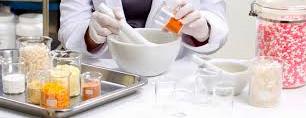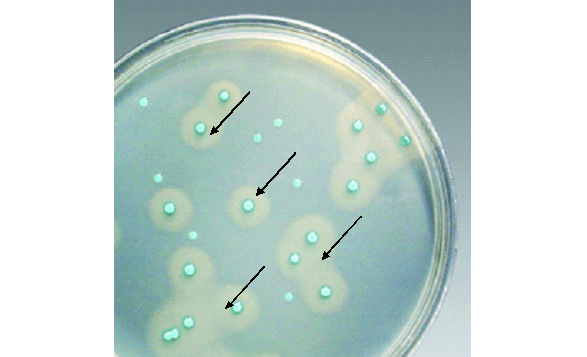Food poisoning/food infection is defined as the microbial infection or disease that is caused by the ingestion of food/food products that contains pathogenic microorganisms. It is an acute or chronic gastroenteritis that is caused by the consumption/ingestion of foods contaminated with pathogenic microorganisms including bacteria, fungi, viruses and even microbial toxins. Food poisoning can also be referred to as food intoxication especially when the infection has to do with the ingestion of preformed toxins of microbes in the food.
Diarrhea, abdominal cramp and profuse vomiting are some clinical symptoms that are associated with food poisoning. Food poisoning or food intoxication can also mean the ingestion of food containing preformed toxins of microbes. The gastrointestinal tract is the most affected part of the body during episodes of food poisoning or food intoxication. Though food poisoning and food intoxication may be used synonymously to mean the same thing in some cases, there is however some variation that exists in these two terms.
While the former (food poisoning/food infection) may only involve the presence of microbes (e.g. living/growing bacteria and fungi) in the affected food; the later (food intoxication) does not usually require the presence of living bacteria in the food but the presence of preformed toxins produced in the food as a result of intense microbial activity.
Food contains nutritive components that also support the growth of microbes; and when these foods are not well preserved or stored or processed, microorganisms (which are ubiquitous in nature) especially bacteria and fungi find their way into the food and then start dividing or replicating. The gradual growth of the microbes in the food also leads to the production of harmful substances (i.e. toxins) which are harmful to the health. Thus when such food/food products are consumed; there is bound to be food intoxications.
Clostridium botulinum (which causes botulism), Clostridium perfringens (which causes gas gangrene), Bacillus cereus (which causes emetic illness),enteropathogenicpathogenic E. coli (EPEC), enterotoxigenic E. coli (ETEC) that causes traveler’s diarrhea, Vibrio cholerae (which causes cholera), Salmonella species (which causes salmonellosis), Yersinia species, Campylobacter jejuni, (acute bacterial gastroenteritis), Shigella (which causes shigellosis)and pathogenic Staphylococcus aureus (which causes Staphylococcalfood poisoning)are some of the importantmicrobes or bacteria that are implicated in most food poisoning or food intoxications.
Some of the toxins produced by microbes in food are heat-labile in nature and thus can withstand some levels of heating or boiling. Toxins produced by microbes that cause food intoxication or food poisoning are generally called enterotoxins. Enterotoxins are toxins produced extracellularly by microbes as they grow; and these toxins are unique in the sense that they produce immediate damage to the small intestine of the host especially in cases where microbial infected food is consumed. Some common food spoilage organisms are shown in Table 1.
Table 1. Common spoilage microorganisms of foods/food products
| SPOILAGE MICROORGANISMS | FOOD PRODUCTS |
| Streptococcus species | Milk |
| Lactobacillus species | Milk |
| Lactobacillus species | Milk |
| Leuconostoc | Milk |
| Pseudomonas species | Milk |
| Proteus species | Milk |
| Corynebacterium species | Vegetables |
| Pseudomonas species | Vegetables |
| Erwinia species | Vegetables |
| Aspergillus species | Fruits |
| Penicillium species | Fruits |
| Geotrichum species | Fruits |
| Rhizopus species | Fruits |
| Cladosporium species | Fruits |
| Other yeasts | Fruits |
| Aeromonas species | Meat and poultry foods |
| Salmonella species | Meat and poultry foods |
| Campylobacter species | Meat and poultry foods |
| Escherichia coli | Meat and poultry foods |
| Acinetobacter species | Meat and poultry foods |
| Pseudomonas species | Meat and poultry foods |
| Listeria monocytogenes | Meat and poultry foods |
| Micrococcus species | Meat and poultry foods |
| Flavobacterium species | Meat and poultry foods |
| Fungi (e.g. Penicillium, Mucor, Candida, Rhizopus) | Meat and poultry foods |
References
Bushell M.E (1998). Application of the principles of industrial microbiology to biotechnology (ed. Wiseman, A.) Chapman and Hall, New York.
Byong H. Lee (2015). Fundamentals of Food Biotechnology. Second edition. Wiley-Blackwell, New Jersey, United States.
Clark D.P and Pazdernik N (2010). Biotechnology. First edition. Elsevier Science and Technology Books, Amsterdam, Netherlands.
Farida A.A (2012). Dairy Microbiology. First edition. Random Publications. New Delhi, India.
Frazier W.C, Westhoff D.C and Vanitha N.M (2014). Food Microbiology. Fifth edition. McGraw-Hill Education (India) Private Limited, New Delhi, India.
Guidebook for the preparation of HACCP plans (1999). Washington, DC, United States Department of Agriculture Food Safety and Inspection Service. Accessed on 20th February, 2015 from: http://www.fsis.usda.gov
Hayes P.R, Forsythe S.J (1999). Food Hygiene, Microbiology and HACCP. 3rd edition. Elsevier Science, London.
Hussaini Anthony Makun (2013). Mycotoxin and food safety in developing countries. InTech Publishers, Rijeka, Croatia. Pp. 77-100.
Jay J.M (2005). Modern Food Microbiology. Fourth edition. Chapman and Hall Inc, New York, USA.
Lightfoot N.F and Maier E.A (1998). Microbiological Analysis of Food and Water. Guidelines for Quality Assurance. Elsevier, Amsterdam.
Nduka Okafor (2007). Modern industrial microbiology and biotechnology. First edition. Science Publishers, New Hampshire, USA.
Roberts D and Greenwood M (2003). Practical Food Microbiology. Third edition. Blackwell publishing Inc, USA.
Discover more from Microbiology Class
Subscribe to get the latest posts sent to your email.





